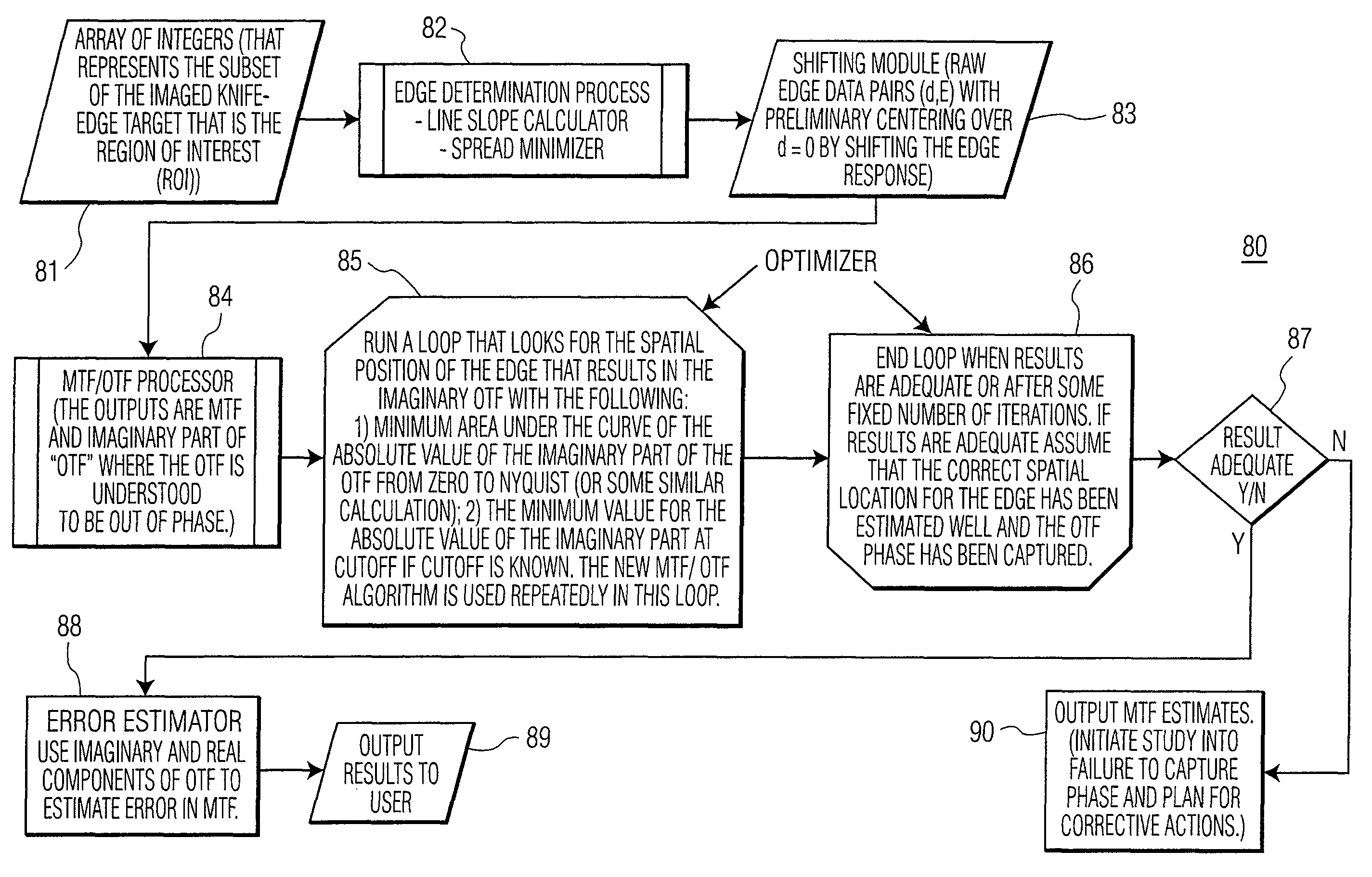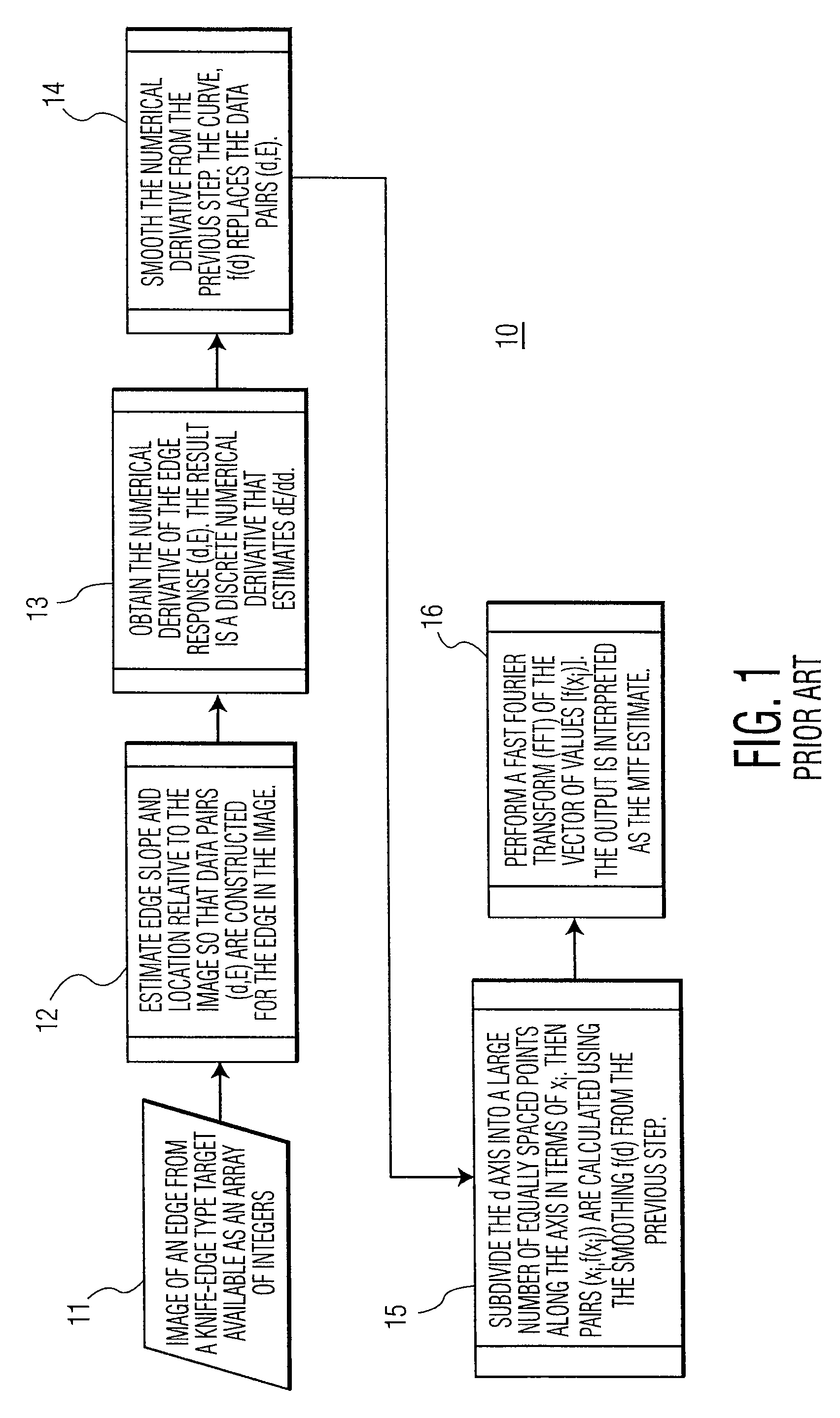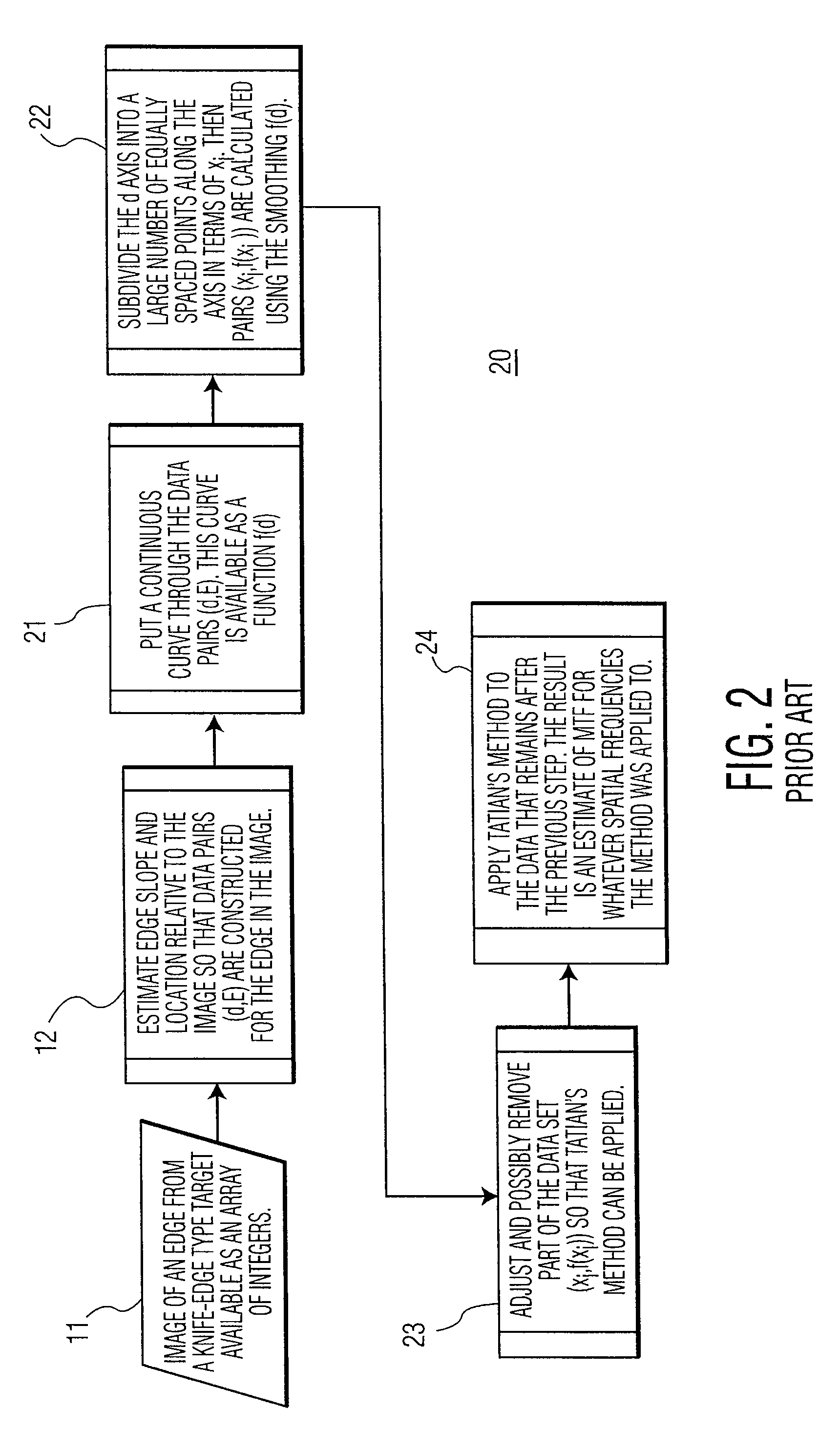Obtaining an optical transfer function (OTF) from an edge in a sampled image data set
an optical transfer function and image data technology, applied in the field of electrooptical system otf, can solve the problems of increasing uncertainty, increasing uncertainty, and introducing additional errors, and achieve the effect of minimizing the spread of edge response data points
- Summary
- Abstract
- Description
- Claims
- Application Information
AI Technical Summary
Benefits of technology
Problems solved by technology
Method used
Image
Examples
Embodiment Construction
[0034]As will be explained, the present invention estimates an optical transfer function (OTF) of an electro-optical system in a multi-step method using novel algorithms and a knife-edge target. The knife-edge target image is tilted with respect to a focal plane array of the sensor, such that the target includes edges which cross different detector elements at different phases. The target is imaged onto the sensor, and the edge slope and edge response data are derived. The modulation transfer function (MTF) is then estimated directly from this edge response data. Finally, the optical transfer function (OTF) is calculated by finding the correct spatial position of the edge and hence the correct phase component. Error bounds for the MTF are also estimated by the present invention.
[0035]Referring to FIG. 3a, there is shown a system for obtaining knife-edge data, the system generally designated as 30. As shown, a knife-edge target is imaged by a sensor system, which may include any sens...
PUM
 Login to View More
Login to View More Abstract
Description
Claims
Application Information
 Login to View More
Login to View More - R&D
- Intellectual Property
- Life Sciences
- Materials
- Tech Scout
- Unparalleled Data Quality
- Higher Quality Content
- 60% Fewer Hallucinations
Browse by: Latest US Patents, China's latest patents, Technical Efficacy Thesaurus, Application Domain, Technology Topic, Popular Technical Reports.
© 2025 PatSnap. All rights reserved.Legal|Privacy policy|Modern Slavery Act Transparency Statement|Sitemap|About US| Contact US: help@patsnap.com



